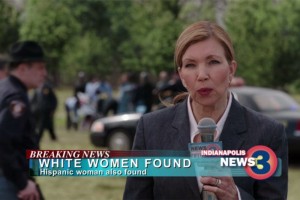Watching it for the first time this weekend, Alejandro Inarritu’s Birdman (2014) is what I would call the definition of a film major’s movie. Filmed in incredibly long takes and minimal cutting, Birdman has done what I have seen no other filmmaker do since Hitchcock’s Rope, although, unlike Rope, Birdman felt very little like a stage production even though, ironically, it was about a stage production. This was prevented by jumping through time much like the human brain, which is what most film’s do and what stage productions fail to do realistically. The one liners in Birdman simply blew me away in terms of film stereotypes and film language. When Sam (Emma Stone) confronts Riggan (Michael Keaton) at the thirty minute marker, she says that he doesn’t like twitter and doesn’t have a Facebook and that because of this he “doesn’t exist” and he doesn’t matter. In this day and age with technology being such a big part of our communication process, it is hard to get by without some sort of relationship with the internet. This line also points to the fact that so many people become famous through social media sites like this that because Riggan does not have one, he isn’t important and literally does not exist in the social media realm.
Another great line was when there is a voice overlay of Riggan speaking as Birdman telling the older, grown up Riggan about what audiences want to see. He says, “people, they love blood. They love action. Not this talky, depressing, philosophical bullshit” and I think this draws attention to the direct comparison between moviegoers who go simply for entertainment and stimulation and moviegoers who go for well-made films and relevant messages. This scene includes an incredible amount of special effects and animation that is fast-paced and widely entertaining and confusing, which makes it captivating; a satirical backdrop for the line about action film.
A noteworthy moment comes when Keaton speaks with the production critic (Lindsay Duncan). I believe this to be a critique of art critics, more specifically those who bash or promote works of art based on the popularity, history, money, etc of the artist rather than for the work itself. While this reporter is a female with probably the most power in the entire film, other females represent the lower side of the totem pole. For example, Lesley (Naomi Watts) is almost raped on stage in front of an audience and she asks a coworker, “why don’t I have any self respect?” which is interesting because of the inserted word “self” when she is complaining of a male coworker taking advantage of her. Laura (Andrea Riseborough) responds with the line, “you’re an actress, honey.” The two share a moment and Laura praises Lesley and before long Riggan walks in, praises Laura, and leaves. She is left glowing with the admiration of the male star. The two females then make out. This pokes fun at female representation both in film and in the entertainment business.
Along with many other significant moments, I enjoyed the film’s use of method acting for Mike Shiner (Edward Norton). It was a subtle, but serious way, to show the consequences of method acting. Mike gets drunk on stage in front of a full audience, he abuses Lesley, he can only get hard in character, and he orders a tanning bed. Riggan even later says, “That’s you Mike. You’re Mr. Natural.” Cinematic realism then plays into the mix with Riggan pulling the trigger on himself, blasting his nose off during his opening night. He ironically has to wear a face mask of plaster and bandages that look like Birdman’s mask and that image is the last we see of Keaton.

